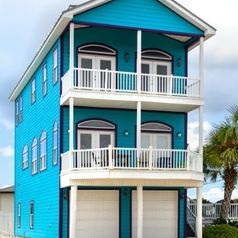<iframe style="width:120px;height:240px;" marginwidth="0" marginheight="0" scrolling="no" frameborder="0" src="//ws-na.amazon-adsystem.com/widgets/q?ServiceVersion=20070822&OneJS=1&Operation=GetAdHtml&MarketPlace=US&source=ss&ref=as_ss_li_til&ad_type=product_link&tracking_id=peaceinvesting-20&language=en_US&marketplace=amazon®ion=US&placement=0060555661&asins=0060555661&linkId=80f8e3b229e4b6fdde8abb238ddd5f6e&show_border=true&link_opens_in_new_window=true"></iframe>|<iframe style="width:120px;height:240px;" marginwidth="0" marginheight="0" scrolling="no" frameborder="0" src="//ws-na.amazon-adsystem.com/widgets/q?ServiceVersion=20070822&OneJS=1&Operation=GetAdHtml&MarketPlace=US&source=ss&ref=as_ss_li_til&ad_type=product_link&tracking_id=peaceinvesting-20&language=en_US&marketplace=amazon®ion=US&placement=1119404509&asins=1119404509&linkId=0beba130446bb217ea2d9cfdcf3b846b&show_border=true&link_opens_in_new_window=true"></iframe>|<iframe style="width:120px;height:240px;" marginwidth="0" marginheight="0" scrolling="no" frameborder="0" src="//ws-na.amazon-adsystem.com/widgets/q?ServiceVersion=20070822&OneJS=1&Operation=GetAdHtml&MarketPlace=US&source=ss&ref=as_ss_li_til&ad_type=product_link&tracking_id=peaceinvesting-20&language=en_US&marketplace=amazon®ion=US&placement=1119376629&asins=1119376629&linkId=2f1e6ff64e783437104d091faaedfec7&show_border=true&link_opens_in_new_window=true"></iframe>

By Dr. Peter Kim of Passive Income MD, WCI Network Partner
Those of you who know me personally know that I’m a big fan of real estate investing. In fact, I think it's one of the best ways for physicians to achieve financial freedom.
The passive income provided by such investments can continue flowing for your entire life, and in fact, the best investments can actually be generational–extending well beyond your own lifetime. However, the biggest benefit of real estate investing is that it can start providing cash flow immediately, and you can begin replacing some of your income right away.
Is There a Foolproof Plan?
I’ll go ahead and say this at the outset: there is no perfect, magic formula for how many rental properties you need in order to retire, just like there’s no perfect, magic formula for how large your stock portfolio needs to be in order to retire.
Yes, there's the popular 4% rule, but in no way is that a guarantee either. There are just too many factors to consider. At the end of the day, all you can do is make a well-educated guess, use real current numbers, and look at both history and statistics.
In all of this, I'm making the assumption that you have absolutely no other source of income, including retirement portfolios, Social Security, and rich children to support you.
More information here:
Buy One Property a Year and Retire Early?
So, How Many Rental Properties Do You Need?
Personally, I like to follow the acronym K.I.S.S.—Keep It Simple, Stupid. This helps me come up with a very simple, completely attainable goal.
As far as answering the question of the day—How many rental properties do you need to retire?—here’s how I go about it:
- Figure out how much you need in retirement to cover your monthly expenses and enjoy life a little.
- Figure out how much monthly cash flow you get from a typical rental unit/property.
Using those two numbers, figuring out how many rental properties you need to retire is fairly simple. To do it, you’ll just need a couple of formulas:
- Monthly amount needed for retirement ÷ Cash flow per rental property = Number of rental properties you need
- Cash flow = Income – Expenses
For our purposes, income is mainly from rent paid for by your tenants. Expenses include the mortgage, interest, taxes, maintenance, vacancy, and a whole host of other things.
More information here:
How to Use Real Estate to Pay for College
An Example at Work

With all that in mind, let’s use an example. Imagine there’s a man looking to find out how many rental properties he needs in order to retire. In order to comfortably retire, he needs $8,000 per month to safely retire and have everything covered.
He’s been buying up a few rental properties, and he notices that he averages $200 per month in cash flow per rental unit. How many properties, then, does he need to retire? ($200 per unit is a very doable and conservative amount. I tend to see closer to $300 per unit in my own portfolio.)
$8,000 ÷ $200 (per rental unit) = 40 units
There you have it: a nice, concrete number to shoot for. If you buy a 10-unit building that provides $200 per unit in cash flow, that’s $2,000 for the building. You only need three more similar buildings to reach your $8,000 goal. Passive income now covers all of your expenses.
Now, I know what some of you smart folks are thinking. You’re thinking that this is ridiculously simplistic—and you’re right. I didn’t mention anything about rent increases, leverage, tax benefits, increasing expenses, etc.
But I can assure you that if you follow the rough formula and do end up with something like 40 units under your belt, you’ll have done something right. You’ll be very close to (or, more likely, way past) where you need to be to retire, and like our hypothetical real estate maven, you’ll be well on your way to retiring comfortably with passive income flowing freely into your accounts.
Have you thought about retiring and using passive income to offset the loss of your salary? How many rental properties would you need? Would you feel comfortable using my formula? Comment below!
The post How Many Rental Properties Do You Need to Retire? appeared first on The White Coat Investor - Investing & Personal Finance for Doctors.
||
----------------------------
By: Josh Katzowitz
Title: How Many Rental Properties Do You Need to Retire?
Sourced From: www.whitecoatinvestor.com/how-many-rental-properties-do-you-need-to-retire/
Published Date: Mon, 26 Dec 2022 07:30:37 +0000
Read More
.png) InvestingStocksToolsClubsVideosPrivacy PolicyTerms And Conditions
InvestingStocksToolsClubsVideosPrivacy PolicyTerms And Conditions
